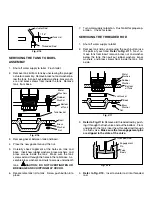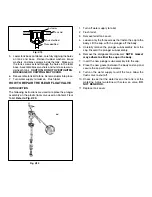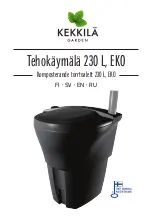
FLEUR
WATER-GUARD
SIPHON JET
TOILET
110870-0489
Copyright
1989 Kohler Co.
INTRODUCTION
This service module will help you to understand the opera
tion and repair of the K-3417 Fleur
Water-Guard Toi
let.
THEORY OF OPERATION
All the water in a close coupled toilet is held in a tank that is
above the rim of the bowl. Water to the rim and siphon jet is
supplied by gravity.
When the toilet is flushed, the water in the tank is directed to
the rim holes and the siphon jet. The siphon jet is located in
an area where it can quickly force water over the upleg of
the trap. This causes a more direct siphon action that
quickly removes waste from the bottom of the bowl.
Refer
to Figs. #1 - #4
.
Toilet bowls for tank type or tankless toilets come in differ
ent heights. This does not affect the operation of the toilet
but the heights are specified for specific reasons. Most
toilet bowls are 14" - 15" from the floor to the top of the
bowl rim. This standard height is considered the most com
fortable for the average adult to use.
When the toilet is flushed, the water in the tank is directed
to the rim holes and the siphon jet. The siphon jet is located
in an area where it can quickly force water over the upleg of
the trap. This causes a more direct siphon action that
quickly removes waste from the bottom of the bowl.
Refer
to Figs. #1 - #4
.
ROUGHINGIN AND
INSTALLATION CONSIDERATIONS
The Kohler Fleur Toilet is perfect for remodeling and new in
stallations. There are two installation considerations
unique to the Feur toilet. The first is the procedure for re
moving the tank lid. To remove the tank lid, it is necessary
to remove the actuator. To do this, place the palm of your
hand over the actuator, and rotate your hand clockwise.
Continue this procedure until the actuator unscrews from
tank lid. The tank lid can now be lifted off the tank. It is also
important to recognize that the air bags in the tank should
be removed and discarded before installing the tank.
Re
fer to the roughingin drawings Fig. #5. For flush valve
SIPHON JET FLUSHING SEQUENCE
Fig. #1
Fig. #2
Fig. #3
Fig. #4
























